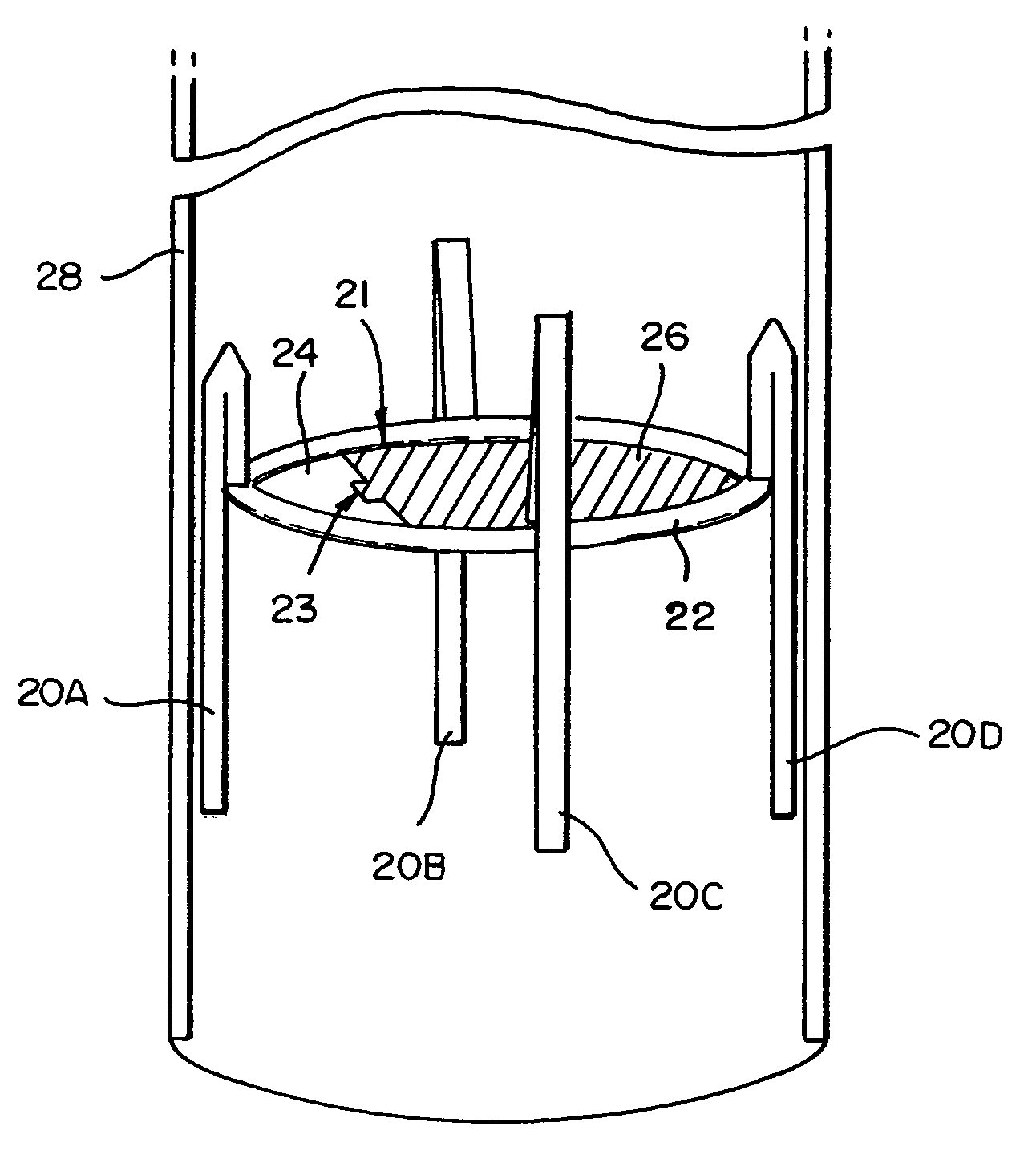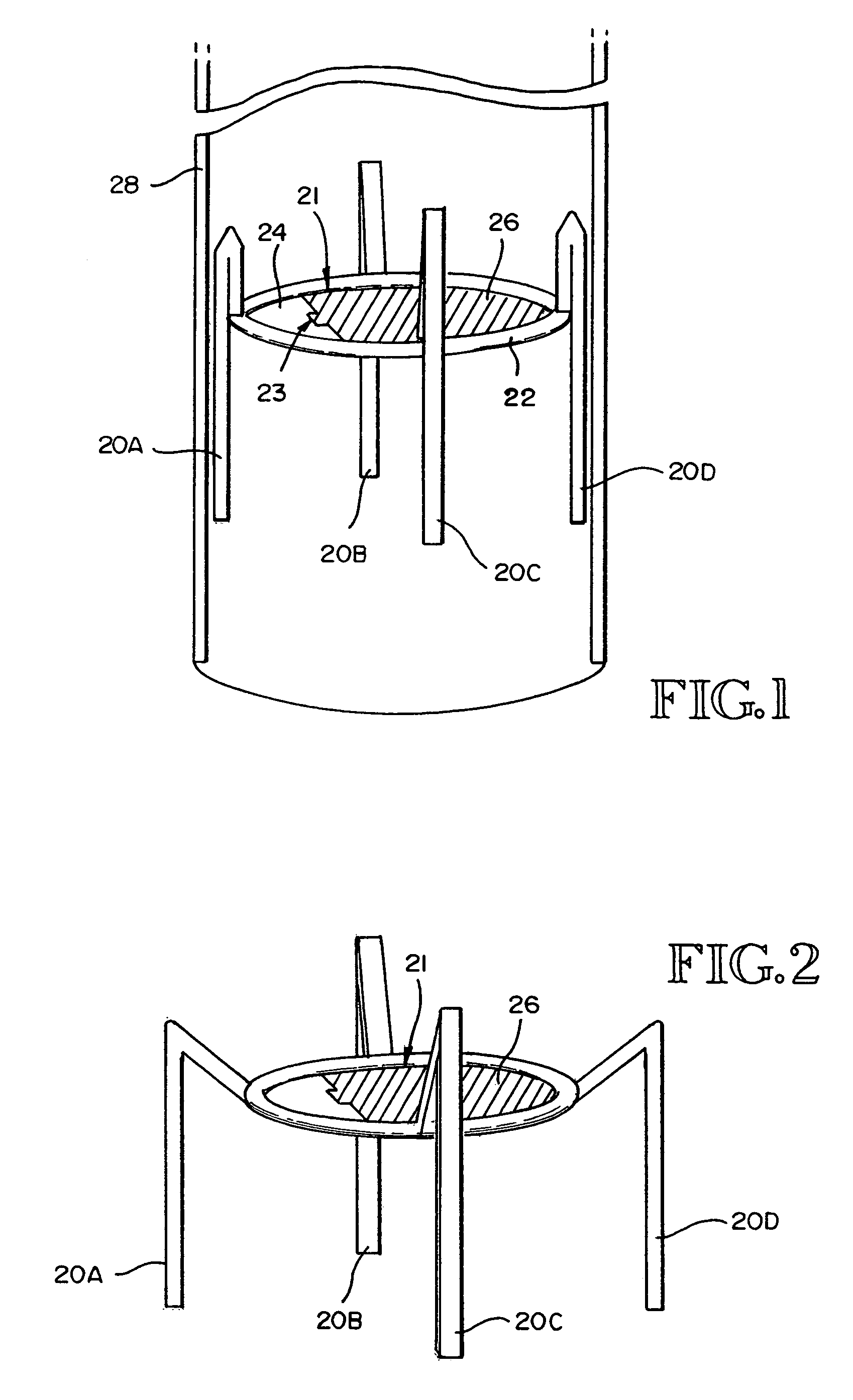Methods and devices for improving breathing in patients with pulmonary disease
a technology for pulmonary disease and patients with pulmonary disease, applied in the field of pulmonology, can solve the problems of limited surgical options, no curative effect, smoking as major risk factor, etc., and achieve the effect of reducing expiratory limitations
- Summary
- Abstract
- Description
- Claims
- Application Information
AI Technical Summary
Benefits of technology
Problems solved by technology
Method used
Image
Examples
first embodiment
[0041]Turning now to the figures, FIG. 1 provides a three-dimensional view of the subject devices in which the device is implantable, where the device is depicted in a first, retracted position. The device shown in FIG. 1 has multiple anchoring members 20A, 20B, 20C, and 20D. Located centrally to the anchoring members 20A, 20B, 20C, and 20D, is a central rim 22. A planar element 24, fixed to the central rim 22, is connected to a movable element 26 by hinge joint 23 to form a central valve 21. The entire device, in the retracted position, is housed within a catheter 28 which allow the device to be placed at the appropriate location within the respiratory tract prior to deployment.
[0042]FIG. 2 provides a three-dimensional view of the device shown in FIG. 1, where the device is depicted in the deployed position with closure of the central valve 21. Anchoring members 20A, 20B, 20C, and 20D are in the deployed or non retracted position which allows the device to be anchored to the surrou...
second embodiment
[0045]FIG. 5 provides a three-dimensional view of the subject devices in which the device is removable and fits within the oral cavity. In this embodiment, indentations 30 and 32 are grooves in which the user's teeth and / or gums fit, serving as a means to secure the device within the oral cavity.
[0046]FIG. 6 provides a three-dimensional view of the device shown in FIG. 5, where the device is depicted during exhalation with closure of the valve. Moveable element 36 is in the closed position and is attached to fixed element 34 via hinge 33. Fixed element 34 is also permanently attached to rim 38.
[0047]FIG. 7 provides a three-dimensional view of the device shown in FIG. 5, where the device is depicted during inhalation with inward opening of the valve, with inward opening of the moveable element 36.
[0048]FIG. 8 provides a three-dimensional view of the device shown in FIG. 5, where the device is depicted with outward deflection of the valve. This might occur during a cough, during which...
PUM
 Login to View More
Login to View More Abstract
Description
Claims
Application Information
 Login to View More
Login to View More - R&D
- Intellectual Property
- Life Sciences
- Materials
- Tech Scout
- Unparalleled Data Quality
- Higher Quality Content
- 60% Fewer Hallucinations
Browse by: Latest US Patents, China's latest patents, Technical Efficacy Thesaurus, Application Domain, Technology Topic, Popular Technical Reports.
© 2025 PatSnap. All rights reserved.Legal|Privacy policy|Modern Slavery Act Transparency Statement|Sitemap|About US| Contact US: help@patsnap.com



